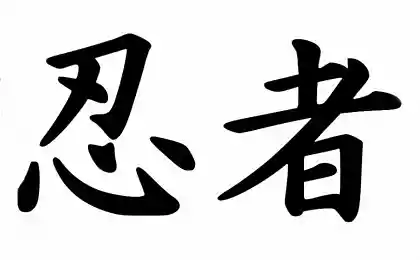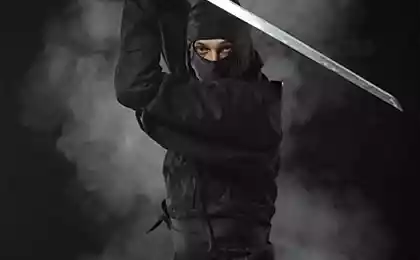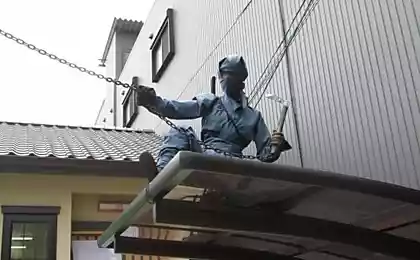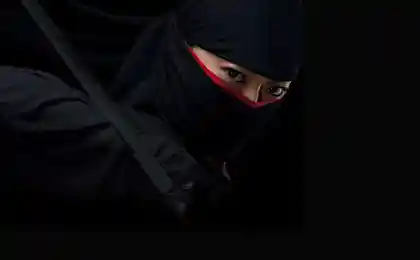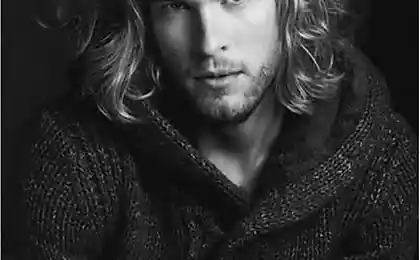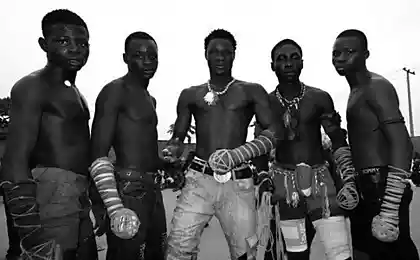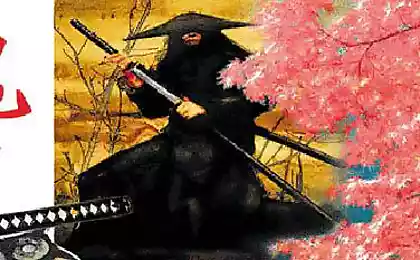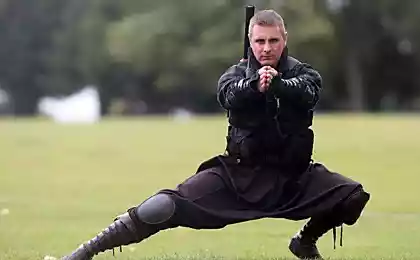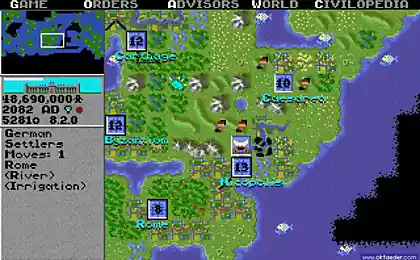641
Miyamoto Musashi — The Way Of Strategy
Twenty nine million four hundred sixty five thousand one hundred eighty three
Who will collate between cunning and prowess when dealing with the enemy?!©Virgil
Learn to wait — says the first principle of the ninja. To wait — despite the pain, anger, fear, fatigue. Wait — I own "I". This principle is beautifully expressed by the famous Japanese swords swordsman Minamoto Musashi, whose benefits were highly valued in the ninja clans.

This man knows certainly, anyone who was in contact with the martial arts. About him were legends, his image has inspired many writers and poets, were devoted to him poems and painted scrolls. It is the incarnate Hero, a living symbol of a Warrior. Samurai, not a loser in the life of a single match, never changed his word. We are talking about the great master Miyamoto Musashi (1584-1645).
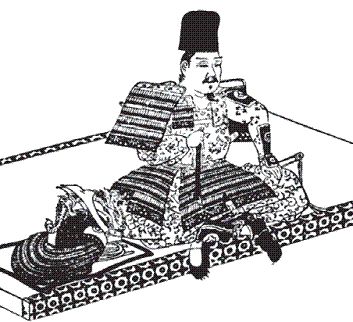
In the book of Five rings master Miyamoto Musashi gives his thoughts about military strategy, planning and tactical calculations, as well as the art of fencing. Book of five rings takes first place in many bibliographies on the art of swordsmanship and strategy, because as the principles apply to both single combat and battle armies.

Musashi is known in Japan as "Kensei", meaning "Holy Sword". "Go Rin, the CoE" is at the beginning of every Kendo bibliography, being unique book, illuminating as the strategy of military action and methods single match. It is not a dissertation on military Affairs, it is, in the words of Musashi, only "a guide for men who want to learn the art of strategy", but the content is always beyond the comprehension of the student. The more I read this book, the more you find in its pages. This will Musashi, the key to the way in which he walked. He was not yet thirty when he became an invincible warrior, but not a donkey, nor founded a school, filled with consciousness of success, and with redoubled zeal plunged into a further search. Even to the end of his master despised a life of luxury and lived for two years in a mountain cave in deep contemplation. The behavior of this fearless and stubborn man had no doubt humble and sincere.
Musashi wrote: "When you attain the Way of Strategy, there isn't anything you couldn't understand" and "You will see the Way in everything." Indeed, he himself became a master in everything. He created remarkable works of ink painting, may be more valued by the Japanese than any other works of this genre. In his paintings, cormorants, herons, Buddhist God of Khotey, dragons, flowers and birds, the bird of the dry tree, Daruma (Bodhidharma) and many more. Musashi became a master calligrapher, evidenced by his work, "Sankey" ("fighting spirit"). In one of the private collections is a small wooden statuette of a Buddhist Saint, to Fudo MEO, the hands of a wizard battle. Recently lost his sculpture of Kannon. Musashi has created a number of works of metal and founded a school of manufacturers Gard for swords. It is believed that he was the author of countless poems and songs. None of them, unfortunately, have not survived. It is also told that the shogun Iemitsu ordered specially made Musashi to write the sunrise over Edo castle.
His paintings are often stamped "Musashi" or the alias "Niten". "Neten" means "Two skies" that sometimes is associated with persistent warrior, vostavshie two swords over his head. Musashi is the founder of the school of fencing known as the "Niten ryu" or "ryu Amma" ("clear circle").
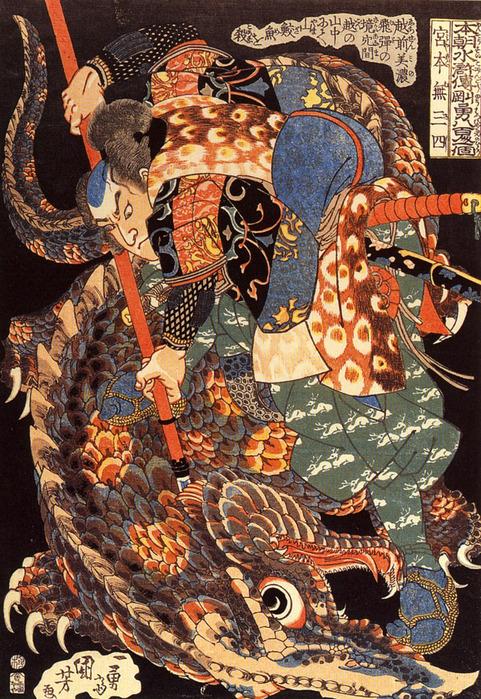
Musashi wrote: "Learn the Ways of all professions". He had done so. He was adopted life experience not only of famous masters of the sword, and monks, strategists, artists and craftsmen, trying to expand their knowledge. Musashi wrote about various aspects of Kendo, so that a novice can examine the text based on their Luggage, and the Kendo master was found in the same words a higher level of knowledge. The text of labour applies not only to military strategy, but to any situation where you need tactics. Japanese businessmen now use "Go Rin But That" as a guide to business practices, conducting sales campaigns like military operations, using the same energetic methods. Just as Musashi seemed cruel person, in fact, pursuing a high ideal, to most people a successful business certainly seems unscrupulous, So that the teachings of Musashi relevant in twentieth century as well as on the medieval battlefield, and is applicable not only to Japanese, but to all races and peoples. The spirit of this doctrine can be summed up in two words: humility and hard work.
He taught that a true warrior should represent himself as already dead. Then he gets rid of the fear of death and desire life. His mind is like clear mirror, instantly reflecting any changes 80 the outside world. Looking in the mirror one sees only his reflection and notices the most polished surface. Therefore, the ability to remain undetected, the ninja were associated with detachment and inner peace, which followed from the absolute self-control.
You need to be able not just to camouflage in the grass, hiding in the trees and in the corridors of the castles, but especially no different from the world. So the ninja has to be in complete harmony with nature and the place, wherever his fate.
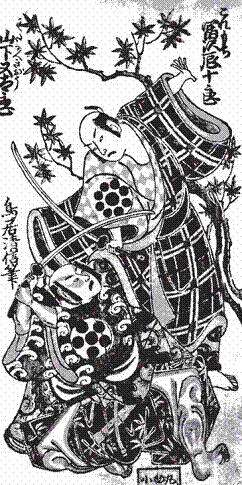
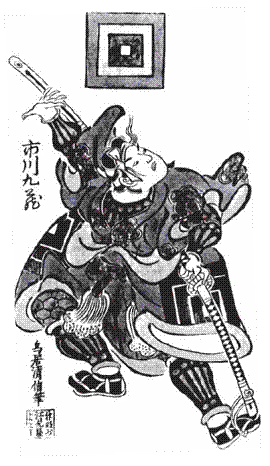
Not everyone can reach the dizzying heights in psycho. Martial artists acknowledged that much depends on innate abilities. However, the basic skills had to master every ninja. They studied the special breathing-meditative exercises aimed at managing the life energy. This "internal art", which came from China, was to spend this energy in its internal energy channels and give you energy particular field (aura).
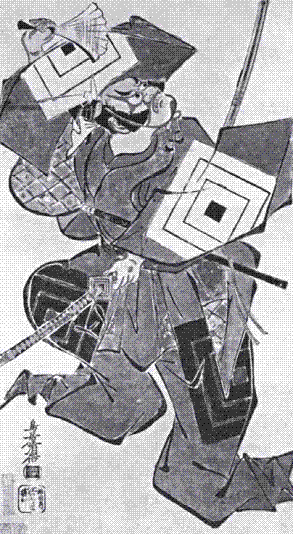
Able to focus energy in the required time "let the energy flow in the shock to the limb, as if throwing it at an opponent. Special movement of the palm, which to the uninitiated observer looks with a light touch, you can strike, damaging the internal organs of the opponent. However, such abilities had only one. The secret was kept even inside the school, and among some clans in General were not known.
Most ninja used energy management as a way of psihoneurozy, calming and clearing the unwanted thoughts from your mind. Thus, there is a realization of the above-mentioned principle of "one body", when a fighter feels not only the movements of the opponent, but also anticipates his intentions, because associated with him in this "United body".
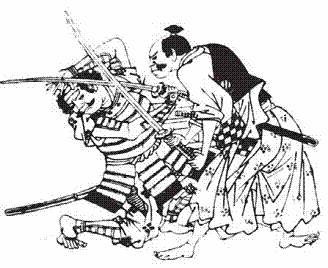
Among the ninja were spread creative ways of self-regulation of tantric Buddhism. His followers recited special spells, sounds which were in resonance with the heavenly powers. Ninja high initiation owned a similar formula, saying them before the fight — the words had to come from the heart and respond to it as the echo of the Sky.
The secret knowledge was, and in particular the interlacing fingers (kozien), which closed the cycle of life energy through special channels. One paliczka stilled the mind, the other gave the power, and the third was allowed to adapt to extreme conditions.
It was believed that each finger is associated with a particular cosmogonic beginning. It could be the five elements of traditional Chinese philosophy (metal, fire, water, wood and earth) or something else. For example, in some schools of ninjutsu thumb corresponded to the void — the beginning and endpoint of all things, index — wind and any gaseous substances, responsible for wisdom and virtue. The middle finger corresponds to fire and combustion and represented the mind and aggression; nameless — water and liquid, controlling the activities of the body and emotions; the little finger — the earth and was linked to the stability of man in a changing world. Closing in a ring, for example, the big and ring fingers, the ninja increases the adaptability and flexibility of consciousness.
All this complex science is fully developed mind and body. The ninja heard the sounds, inaccessible to the ordinary person with his ear to the ground, learned the pace of the samurai horse at a distance of one kilometer. The ninja knew how to move silently, quietly and swiftly like the wind. A special technique of movement sideways (Yoko-arouqi) gave the opportunity to confuse his pursuers. Another kind of movement (Nuka-ASI) lay in his ability to move so easily to the forest under the foot Russula any one branch.
Most experienced trained, karumi-Jutsu — art to lighten the weight of his body. This amazing property still show master Chinese cigana. Thanks to the skills of this art fighters have made high jumps, struck his feet, deftly moving across the trees, clinging to small branches.
Adhering to the extreme of practicality, the ninja did not seek to defeat the enemy canonically, as prescribed by the code of samurai honor. Had suddenly appear in front of a numerically superior enemy, to strike a stiletto or sword, put some poison and just as suddenly disappear. The ninja could "leak" through small gaps, for example, to climb under the fence, making a tunnel not more than 20×20 inches. Through training that begins from childhood, they could without harm to themselves to make an artificial dislocation of the shoulder, elbow, and hip joints. It helped them, wriggling like a snake to free themselves from tight bondage or to pretend to be dead, lying in an incredible position.

The ninja tried to avoid direct confrontation, not expecting to be stronger than the samurai. That's why I had to "come out of the void" and to strike a decisive blow. Occasions when it seemed that is exactly what happens, were frequent, and in feudal Japan believed in the existence of Tongo and mystical creatures, half-ravens, able to disappear in an instant, as if dissolving into the air. In fact, the ninja reached invisible, acting, for example, under cover of night, and silently stalked his prey. In addition, in some schools art "to be invisible" consisted of learning various techniques of hypnosis. I must admit that the art of hypnosis in the East has always been at a much higher level than it is even now known to modern science. As example, Indian fakirs and Tibetan lamas who were the real masters of illusions, demonstrating his gift, even at large gatherings of people.
Huge ninja attention was also paid to the ability to disguise and use the terrain. They could spend hours swimming in the river holding onto a log and merging with him, and for weeks to tunnel under samurai house and rasp it with stone floorboards. To have that kind of patience, the ninja had to step over his "I". In addition, to bring the art of camouflage to perfection, to be able to merge with nature, or interior design at the right time, it was necessary to be in harmony with any place where the ninja was. That is why great attention in the preparation was given to the techniques of psycho-spiritual development.
In addition to the fighting skills of a ninja mastered the art of illusion (gendzjutsu) and spells (izuzu). Particularly famous in this respect was the master Kosinksi, which worked miracles. Sergeev describes the life of a ninja in the following way: "Every ninja was not only to spy and eavesdrop, but also to analyze, to record, to encrypt and to sketch the extracted information. An essential set of professional skills was to know, at least, Chinese language, fortification and cartography, to understand strategy and tactics. Education completed the acting course: ninja carefully studied the ancient Chinese seven human types. And they are not just playing roles, and lived real lives of those characters who have chosen to cover. In addition to General, mandatory training programs each school of ninjutsu has cultivated its original military art. So, Gecko-ryu taught the ability to incapacitate the enemy, her fingertips hitting the pain points of his body. Cotto-ryu practiced the art of hypnosis and specialized in fractures and dislocations. Washin-ryu required a special skill with swords, javelins and spears. However, the codes of conduct demanded in any case not to give the enemy his membership in a particular school. With the threat of capture of the spy chose to disfigure his face and destroy any signs which would help to establish his membership in a specific organization ninja. And all his life "black" has remained faithful disciples of yamabushi monks, one of the most mysterious Buddhist sects. Yamabushi helped them to comprehend the dark depths of mysticism and cosmic abyss of parapsychology".

Among the ninja were a lot of women, called kunoichi. Their main weapon was a beauty, women's resourcefulness and fanaticism. They could work as a geisha, maids, to perform farm work. Deprived of the ability to carry a sword and yielding to men in physical strength, they used hair pins and fans that blows to the throat and face the enemy. If a samurai was recognized kunoichi, it was given to mock the guard and then killed. So women of the world in a moment of danger followed the old ritual suicide.
Any object in the hands of an experienced warrior turned into a weapon. Ninja disguised as a wandering monk, could let the big monastic staff. For the enemy was a complete surprise when out of the innocuous end of the stick pop out a sharp blade or flew a poisoned arrow. Sometimes the staff had made the hole and hid there a long chain. Another short stick, was used not only for impact protection but also as a lever for creases of the limbs of the victim.
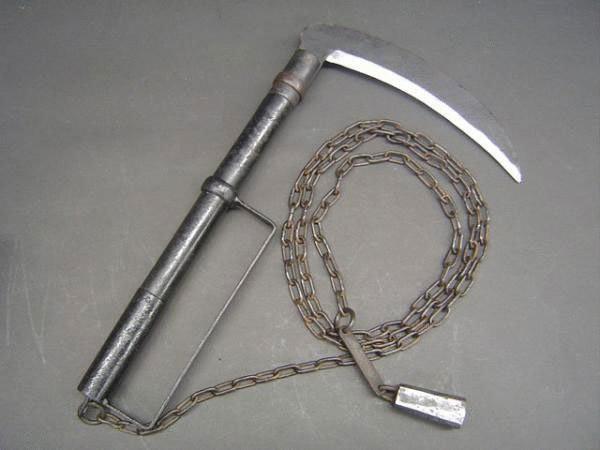
The characteristic weapon of the ninja warriors was kusarigama — sickle with a farm attached to its hilt by a long chain; nunchaku — flail for threshing grain; tonfa -handle manual grain mill. A special category were small handy items -thin. During lovemaking kunoichi tore at a particular point on the body of the samurai an ordinary needle. Death could come instantly and sometimes samurai did not notice. Removing the needle and gently having said goodbye, the woman was gone, and in two or three days, the samurai suddenly died in terrible agony. Since the apparent reason was not re-born rumors about spirits-killers. The spaghetti belonged and throwing weapons — for example, the same shuriken. Thrown by an experienced hand, they struck the target at a distance of 25 meters. Shuriken may have been poisoned, they almost managed to escape when their metal fan out five or six pieces.
To protect yourself from the chase, the ninja has left behind him the spikes — Tetsu-BisI. Firearms were used very rarely. The shot found the shooter. So basically in the course were effective at close range and very unexpected for the victim of a brass tube with a set of poisoned needles.
In traditional Japan, there were no "system ninja" as a single style. Although psycho was used quite widely, nothing extraordinary in these features was not. All of these abilities were based on the ability to control his "energy", which opened the way to all that an ordinary man called supernatural.
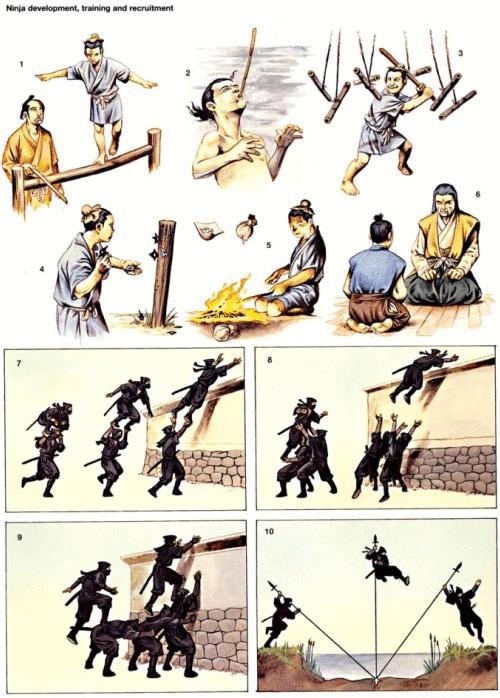
Now ninjutsu — very affordable training system. Around the world there are many schools and clubs teaching "the arts patient" is, First of all, this system involves the harmonious physical and spiritual development of man. But if physical perfection is available to a large number of people, achieving heights of the spirit -yet with a few. So dominant is still the spiritual aspect.
Training usually consists of three levels. At the first, lowest level, a ninja learns to fall on a hard floor, silently to move and disappear, to overcome on their bellies considerable distances. It develops all groups of muscles and tendons.
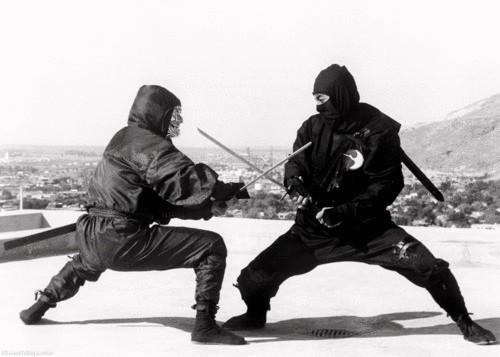
On the second level, develop mental abilities and studied human nature. Distinguishing five emotional States (cowardice, laziness, temper, vanity, apathy), and five base desires (hunger, pleasure, sex, pride, greed), the ninja learns the weaknesses of the opponent and uses them for their own purposes. Achieving this has a high intuition, he listens to the inner voice in order to avoid unexpected danger.
At the highest level studied the special techniques of meditation and learned all the secret steps to enlightenment. Thus, the person becomes capable at any time to enter an altered state of consciousness — active combat trance, which opens the door to much higher levels of human capabilities and abilities than those that exist in the normal state of consciousness.
Indicative in this sense, the following Oriental parable. Once in the land of the Rising Sun going to the contests the most famous fighters. After thousands of fights the sage took three of the great warriors and asked to tell how they train.
First I got a huge, fierce looking warrior and said:
— I get up at sunrise and crush anything that gets in my way until around my cabin does not remain only dust and dust.
The second stood a lean ascetic warrior, more like a monk than a fighter:
— I get up at sunrise and meditate. I'm taking my body under the control of reason and will and cause it to be easy and quick as thought.
The third warrior was like a very ordinary person, and if I won a thousand victories, no one would have thought that he is the greatest warrior of the Rising Sun. The secret of his skill was simple.
— And I do not train. -he said, — I just try to be present in all that I do.
This parable is significant because it reflects all three levels of training martial arts: physical, mental and spiritual. "Be present in all" means to find harmony with the surrounding world, people and events. Only after reaching this level, a warrior is almost invincible.
Currently, the experience of medieval ninja warriors is widely used by secret services of many countries. One such unit of the Special service of the USA stormed in may 1980 the Iranian Embassy in London seized by Iranian terrorists. The operation to free the hostages took only a few minutes and in the actions of the soldiers resembled the characteristic handwriting of the ninja.
Source: /users/1077
Who will collate between cunning and prowess when dealing with the enemy?!©Virgil
Learn to wait — says the first principle of the ninja. To wait — despite the pain, anger, fear, fatigue. Wait — I own "I". This principle is beautifully expressed by the famous Japanese swords swordsman Minamoto Musashi, whose benefits were highly valued in the ninja clans.

This man knows certainly, anyone who was in contact with the martial arts. About him were legends, his image has inspired many writers and poets, were devoted to him poems and painted scrolls. It is the incarnate Hero, a living symbol of a Warrior. Samurai, not a loser in the life of a single match, never changed his word. We are talking about the great master Miyamoto Musashi (1584-1645).

In the book of Five rings master Miyamoto Musashi gives his thoughts about military strategy, planning and tactical calculations, as well as the art of fencing. Book of five rings takes first place in many bibliographies on the art of swordsmanship and strategy, because as the principles apply to both single combat and battle armies.

Musashi is known in Japan as "Kensei", meaning "Holy Sword". "Go Rin, the CoE" is at the beginning of every Kendo bibliography, being unique book, illuminating as the strategy of military action and methods single match. It is not a dissertation on military Affairs, it is, in the words of Musashi, only "a guide for men who want to learn the art of strategy", but the content is always beyond the comprehension of the student. The more I read this book, the more you find in its pages. This will Musashi, the key to the way in which he walked. He was not yet thirty when he became an invincible warrior, but not a donkey, nor founded a school, filled with consciousness of success, and with redoubled zeal plunged into a further search. Even to the end of his master despised a life of luxury and lived for two years in a mountain cave in deep contemplation. The behavior of this fearless and stubborn man had no doubt humble and sincere.
Musashi wrote: "When you attain the Way of Strategy, there isn't anything you couldn't understand" and "You will see the Way in everything." Indeed, he himself became a master in everything. He created remarkable works of ink painting, may be more valued by the Japanese than any other works of this genre. In his paintings, cormorants, herons, Buddhist God of Khotey, dragons, flowers and birds, the bird of the dry tree, Daruma (Bodhidharma) and many more. Musashi became a master calligrapher, evidenced by his work, "Sankey" ("fighting spirit"). In one of the private collections is a small wooden statuette of a Buddhist Saint, to Fudo MEO, the hands of a wizard battle. Recently lost his sculpture of Kannon. Musashi has created a number of works of metal and founded a school of manufacturers Gard for swords. It is believed that he was the author of countless poems and songs. None of them, unfortunately, have not survived. It is also told that the shogun Iemitsu ordered specially made Musashi to write the sunrise over Edo castle.
His paintings are often stamped "Musashi" or the alias "Niten". "Neten" means "Two skies" that sometimes is associated with persistent warrior, vostavshie two swords over his head. Musashi is the founder of the school of fencing known as the "Niten ryu" or "ryu Amma" ("clear circle").

Musashi wrote: "Learn the Ways of all professions". He had done so. He was adopted life experience not only of famous masters of the sword, and monks, strategists, artists and craftsmen, trying to expand their knowledge. Musashi wrote about various aspects of Kendo, so that a novice can examine the text based on their Luggage, and the Kendo master was found in the same words a higher level of knowledge. The text of labour applies not only to military strategy, but to any situation where you need tactics. Japanese businessmen now use "Go Rin But That" as a guide to business practices, conducting sales campaigns like military operations, using the same energetic methods. Just as Musashi seemed cruel person, in fact, pursuing a high ideal, to most people a successful business certainly seems unscrupulous, So that the teachings of Musashi relevant in twentieth century as well as on the medieval battlefield, and is applicable not only to Japanese, but to all races and peoples. The spirit of this doctrine can be summed up in two words: humility and hard work.
He taught that a true warrior should represent himself as already dead. Then he gets rid of the fear of death and desire life. His mind is like clear mirror, instantly reflecting any changes 80 the outside world. Looking in the mirror one sees only his reflection and notices the most polished surface. Therefore, the ability to remain undetected, the ninja were associated with detachment and inner peace, which followed from the absolute self-control.
You need to be able not just to camouflage in the grass, hiding in the trees and in the corridors of the castles, but especially no different from the world. So the ninja has to be in complete harmony with nature and the place, wherever his fate.


Not everyone can reach the dizzying heights in psycho. Martial artists acknowledged that much depends on innate abilities. However, the basic skills had to master every ninja. They studied the special breathing-meditative exercises aimed at managing the life energy. This "internal art", which came from China, was to spend this energy in its internal energy channels and give you energy particular field (aura).

Able to focus energy in the required time "let the energy flow in the shock to the limb, as if throwing it at an opponent. Special movement of the palm, which to the uninitiated observer looks with a light touch, you can strike, damaging the internal organs of the opponent. However, such abilities had only one. The secret was kept even inside the school, and among some clans in General were not known.
Most ninja used energy management as a way of psihoneurozy, calming and clearing the unwanted thoughts from your mind. Thus, there is a realization of the above-mentioned principle of "one body", when a fighter feels not only the movements of the opponent, but also anticipates his intentions, because associated with him in this "United body".

Among the ninja were spread creative ways of self-regulation of tantric Buddhism. His followers recited special spells, sounds which were in resonance with the heavenly powers. Ninja high initiation owned a similar formula, saying them before the fight — the words had to come from the heart and respond to it as the echo of the Sky.
The secret knowledge was, and in particular the interlacing fingers (kozien), which closed the cycle of life energy through special channels. One paliczka stilled the mind, the other gave the power, and the third was allowed to adapt to extreme conditions.
It was believed that each finger is associated with a particular cosmogonic beginning. It could be the five elements of traditional Chinese philosophy (metal, fire, water, wood and earth) or something else. For example, in some schools of ninjutsu thumb corresponded to the void — the beginning and endpoint of all things, index — wind and any gaseous substances, responsible for wisdom and virtue. The middle finger corresponds to fire and combustion and represented the mind and aggression; nameless — water and liquid, controlling the activities of the body and emotions; the little finger — the earth and was linked to the stability of man in a changing world. Closing in a ring, for example, the big and ring fingers, the ninja increases the adaptability and flexibility of consciousness.
All this complex science is fully developed mind and body. The ninja heard the sounds, inaccessible to the ordinary person with his ear to the ground, learned the pace of the samurai horse at a distance of one kilometer. The ninja knew how to move silently, quietly and swiftly like the wind. A special technique of movement sideways (Yoko-arouqi) gave the opportunity to confuse his pursuers. Another kind of movement (Nuka-ASI) lay in his ability to move so easily to the forest under the foot Russula any one branch.
Most experienced trained, karumi-Jutsu — art to lighten the weight of his body. This amazing property still show master Chinese cigana. Thanks to the skills of this art fighters have made high jumps, struck his feet, deftly moving across the trees, clinging to small branches.
Adhering to the extreme of practicality, the ninja did not seek to defeat the enemy canonically, as prescribed by the code of samurai honor. Had suddenly appear in front of a numerically superior enemy, to strike a stiletto or sword, put some poison and just as suddenly disappear. The ninja could "leak" through small gaps, for example, to climb under the fence, making a tunnel not more than 20×20 inches. Through training that begins from childhood, they could without harm to themselves to make an artificial dislocation of the shoulder, elbow, and hip joints. It helped them, wriggling like a snake to free themselves from tight bondage or to pretend to be dead, lying in an incredible position.

The ninja tried to avoid direct confrontation, not expecting to be stronger than the samurai. That's why I had to "come out of the void" and to strike a decisive blow. Occasions when it seemed that is exactly what happens, were frequent, and in feudal Japan believed in the existence of Tongo and mystical creatures, half-ravens, able to disappear in an instant, as if dissolving into the air. In fact, the ninja reached invisible, acting, for example, under cover of night, and silently stalked his prey. In addition, in some schools art "to be invisible" consisted of learning various techniques of hypnosis. I must admit that the art of hypnosis in the East has always been at a much higher level than it is even now known to modern science. As example, Indian fakirs and Tibetan lamas who were the real masters of illusions, demonstrating his gift, even at large gatherings of people.
Huge ninja attention was also paid to the ability to disguise and use the terrain. They could spend hours swimming in the river holding onto a log and merging with him, and for weeks to tunnel under samurai house and rasp it with stone floorboards. To have that kind of patience, the ninja had to step over his "I". In addition, to bring the art of camouflage to perfection, to be able to merge with nature, or interior design at the right time, it was necessary to be in harmony with any place where the ninja was. That is why great attention in the preparation was given to the techniques of psycho-spiritual development.
In addition to the fighting skills of a ninja mastered the art of illusion (gendzjutsu) and spells (izuzu). Particularly famous in this respect was the master Kosinksi, which worked miracles. Sergeev describes the life of a ninja in the following way: "Every ninja was not only to spy and eavesdrop, but also to analyze, to record, to encrypt and to sketch the extracted information. An essential set of professional skills was to know, at least, Chinese language, fortification and cartography, to understand strategy and tactics. Education completed the acting course: ninja carefully studied the ancient Chinese seven human types. And they are not just playing roles, and lived real lives of those characters who have chosen to cover. In addition to General, mandatory training programs each school of ninjutsu has cultivated its original military art. So, Gecko-ryu taught the ability to incapacitate the enemy, her fingertips hitting the pain points of his body. Cotto-ryu practiced the art of hypnosis and specialized in fractures and dislocations. Washin-ryu required a special skill with swords, javelins and spears. However, the codes of conduct demanded in any case not to give the enemy his membership in a particular school. With the threat of capture of the spy chose to disfigure his face and destroy any signs which would help to establish his membership in a specific organization ninja. And all his life "black" has remained faithful disciples of yamabushi monks, one of the most mysterious Buddhist sects. Yamabushi helped them to comprehend the dark depths of mysticism and cosmic abyss of parapsychology".

Among the ninja were a lot of women, called kunoichi. Their main weapon was a beauty, women's resourcefulness and fanaticism. They could work as a geisha, maids, to perform farm work. Deprived of the ability to carry a sword and yielding to men in physical strength, they used hair pins and fans that blows to the throat and face the enemy. If a samurai was recognized kunoichi, it was given to mock the guard and then killed. So women of the world in a moment of danger followed the old ritual suicide.
Any object in the hands of an experienced warrior turned into a weapon. Ninja disguised as a wandering monk, could let the big monastic staff. For the enemy was a complete surprise when out of the innocuous end of the stick pop out a sharp blade or flew a poisoned arrow. Sometimes the staff had made the hole and hid there a long chain. Another short stick, was used not only for impact protection but also as a lever for creases of the limbs of the victim.

The characteristic weapon of the ninja warriors was kusarigama — sickle with a farm attached to its hilt by a long chain; nunchaku — flail for threshing grain; tonfa -handle manual grain mill. A special category were small handy items -thin. During lovemaking kunoichi tore at a particular point on the body of the samurai an ordinary needle. Death could come instantly and sometimes samurai did not notice. Removing the needle and gently having said goodbye, the woman was gone, and in two or three days, the samurai suddenly died in terrible agony. Since the apparent reason was not re-born rumors about spirits-killers. The spaghetti belonged and throwing weapons — for example, the same shuriken. Thrown by an experienced hand, they struck the target at a distance of 25 meters. Shuriken may have been poisoned, they almost managed to escape when their metal fan out five or six pieces.
To protect yourself from the chase, the ninja has left behind him the spikes — Tetsu-BisI. Firearms were used very rarely. The shot found the shooter. So basically in the course were effective at close range and very unexpected for the victim of a brass tube with a set of poisoned needles.
In traditional Japan, there were no "system ninja" as a single style. Although psycho was used quite widely, nothing extraordinary in these features was not. All of these abilities were based on the ability to control his "energy", which opened the way to all that an ordinary man called supernatural.

Now ninjutsu — very affordable training system. Around the world there are many schools and clubs teaching "the arts patient" is, First of all, this system involves the harmonious physical and spiritual development of man. But if physical perfection is available to a large number of people, achieving heights of the spirit -yet with a few. So dominant is still the spiritual aspect.
Training usually consists of three levels. At the first, lowest level, a ninja learns to fall on a hard floor, silently to move and disappear, to overcome on their bellies considerable distances. It develops all groups of muscles and tendons.

On the second level, develop mental abilities and studied human nature. Distinguishing five emotional States (cowardice, laziness, temper, vanity, apathy), and five base desires (hunger, pleasure, sex, pride, greed), the ninja learns the weaknesses of the opponent and uses them for their own purposes. Achieving this has a high intuition, he listens to the inner voice in order to avoid unexpected danger.
At the highest level studied the special techniques of meditation and learned all the secret steps to enlightenment. Thus, the person becomes capable at any time to enter an altered state of consciousness — active combat trance, which opens the door to much higher levels of human capabilities and abilities than those that exist in the normal state of consciousness.
Indicative in this sense, the following Oriental parable. Once in the land of the Rising Sun going to the contests the most famous fighters. After thousands of fights the sage took three of the great warriors and asked to tell how they train.
First I got a huge, fierce looking warrior and said:
— I get up at sunrise and crush anything that gets in my way until around my cabin does not remain only dust and dust.
The second stood a lean ascetic warrior, more like a monk than a fighter:
— I get up at sunrise and meditate. I'm taking my body under the control of reason and will and cause it to be easy and quick as thought.
The third warrior was like a very ordinary person, and if I won a thousand victories, no one would have thought that he is the greatest warrior of the Rising Sun. The secret of his skill was simple.
— And I do not train. -he said, — I just try to be present in all that I do.
This parable is significant because it reflects all three levels of training martial arts: physical, mental and spiritual. "Be present in all" means to find harmony with the surrounding world, people and events. Only after reaching this level, a warrior is almost invincible.
Currently, the experience of medieval ninja warriors is widely used by secret services of many countries. One such unit of the Special service of the USA stormed in may 1980 the Iranian Embassy in London seized by Iranian terrorists. The operation to free the hostages took only a few minutes and in the actions of the soldiers resembled the characteristic handwriting of the ninja.
Source: /users/1077
